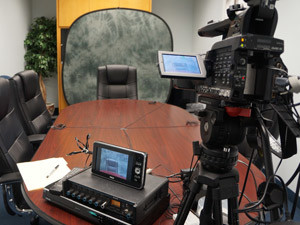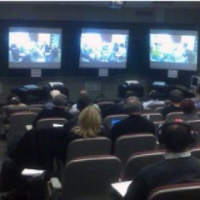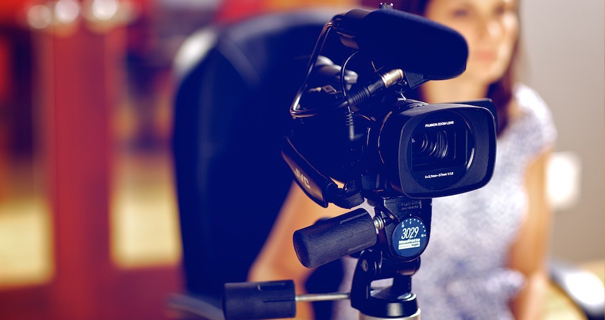How Legal Videography Assists in Preserving Vital Evidence for Litigation
How Legal Videography Assists in Preserving Vital Evidence for Litigation
Blog Article
Why Lawful Videography Is Vital for Accurate Court Recordings
The role of legal videography in courtroom settings can not be overstated, as it works as a necessary device for preserving the honesty of court records. By catching both verbal and non-verbal interaction, it improves the clearness of witness testimonies and reflects the subtleties of court room interactions. This detailed paperwork not just help in decreasing prospective misconceptions however additionally sustains appellate testimonials, consequently reinforcing the judicial process. Nonetheless, the implications of integrating lawful videography right into common court room methods increase vital inquiries about its more comprehensive influence on the lawful system. What might these ramifications require?
Importance of Visual Evidence
In the realm of lawful proceedings, the significance of aesthetic evidence can not be overstated. Aesthetic proof functions as a powerful tool in developing facts, supporting testimonies, and boosting the total clarity of a case. This sort of proof, which consists of photographs, video clips, and layouts, can supply a substantial context that spoken summaries frequently do not have, thus supplying juries and judges a clearer understanding of the circumstances bordering a case.
In addition, visual evidence help in the retention of information. Human cognition is inherently visual, and individuals are most likely to bear in mind and understand info provided in an aesthetic style. In the court, this can be essential, as compelling visual evidence can persuade viewpoints and strengthen the narrative provided by lawful representatives.
Additionally, using aesthetic evidence can reduce misconceptions and obscurities that usually arise from verbal exchanges. By supplying a direct depiction of events, aesthetic evidence assists to remove subjective analyses and fosters a more objective evaluation of the facts. The assimilation of aesthetic evidence right into lawful process not only enhances the stability of the judicial process however additionally enhances the possibility of achieving a simply outcome.
Catching Non-Verbal Hints
Using advanced videography techniques can considerably enhance the capture of non-verbal signs during lawful process. Non-verbal interaction, consisting of facial expressions, body language, and eye contact, plays an essential duty in conveying feelings and purposes that might not be clearly specified in verbal statement. legal videography. Legal videography uses high-definition cameras and critical angles to make certain that these subtle cues are taped with clearness and precision
The ability to examine non-verbal habits can supply valuable context to statements made throughout court sessions. As an example, a witness's reluctance or confidence can be translated with their posture or motions, possibly influencing the jury's assumption of reputation. Additionally, using close-up shots can aid concentrate on an audio speaker's expressions, enabling a much more nuanced understanding of the testimony.
Additionally, integrating numerous camera angles can create a comprehensive sight of communications, highlighting characteristics between celebrations entailed. This diverse approach not only enhances the precision of the court document yet also help in preserving the stability of the judicial procedure - legal videography. Eventually, catching non-verbal hints through lawful videography cultivates a richer, much more total representation of court proceedings

Enhancing Testament Reliability
The integrity of statement can be significantly boosted via making use of high-quality lawful videography. Video recordings act as an unbiased tool that captures not only the spoken words of witnesses but also the nuances of their delivery, including tone, pacing, and emotional expressiveness. This multifaceted documentation gives a more clear understanding of the witness's integrity and intents, which can be pivotal in lawful process.
Moreover, legal videography decreases the capacity for misinterpretations that might arise from composed records alone. When jurors can observe a witness's attitude and body movement combined with their testimony, they are much better outfitted to evaluate the authenticity and dependability of the evidence presented. This aesthetic context can enhance the testimonial narrative, making it a lot more engaging and credible.
Additionally, the existence of a video recording can hinder possible incongruities in statement. Witnesses find here may be much more cautious in their declarations when they understand they are being taped, leading to even more precise and honest accounts. On the whole, top notch legal videography improves the stability of statement, making sure that the court has accessibility to a total and sincere representation of the truths as communicated by the witnesses.
Sustaining Appeals and Reviews
Legal videography plays a crucial function in sustaining appeals and reviews by supplying an extensive aesthetic document of courtroom proceedings. This aesthetic documents captures not just the spoken words of witnesses and attorneys but likewise the subtleties of body language, intonation, and courtroom dynamics. Such aspects can be critical in understanding the context of testimonies and disagreements provided.
In the appellate process, where the emphasis gets on mistakes of regulation and step-by-step fairness, a video clip record can work as a crucial device for appellate courts. It enables judges to review the original test context, making certain that decisions are based on a full understanding of the proceedings. visit this website The ability to aesthetically analyze the disposition of witnesses or the communications in between parties can expose insights that composed transcripts may ignore.

Furthermore, legal videography can assist in clearing up ambiguities in testimonies or procedural rulings, therefore strengthening the basis for an appeal. By offering a dependable, objective account of what transpired in court, legal videography not just supports the honesty of the legal process yet also encourages all celebrations entailed to make enlightened decisions concerning their cases.
Simplifying Court Procedures
Enhancing court room effectiveness, legal videography streamlines procedures by providing immediate accessibility to aesthetic documents of process. This modern technology permits judges, lawyers, and courts to revisit critical testament and evidence, making certain that all celebrations have a clear understanding of the situation. By recording the nuances of verbal and non-verbal communication, videography improves the record, making it less complicated to understand the context and weight of testimonies.

In addition, video clip recordings can help with remote engagement in hearings, permitting greater flexibility in scheduling and involvement, which is particularly important in complex situations including several stakeholders.
Conclusion
In verdict, lawful videography plays a crucial function in making certain precise court recordings by giving necessary aesthetic evidence that records both verbal and non-verbal communication. This technique improves the reliability of statements, supports appellate reviews, and improves court room processes. By fostering an extensive understanding of courtroom characteristics, lawful videography ultimately contributes to extra fair judicial results, strengthening the stability of the legal top article system and promoting educated decision-making.
Report this page